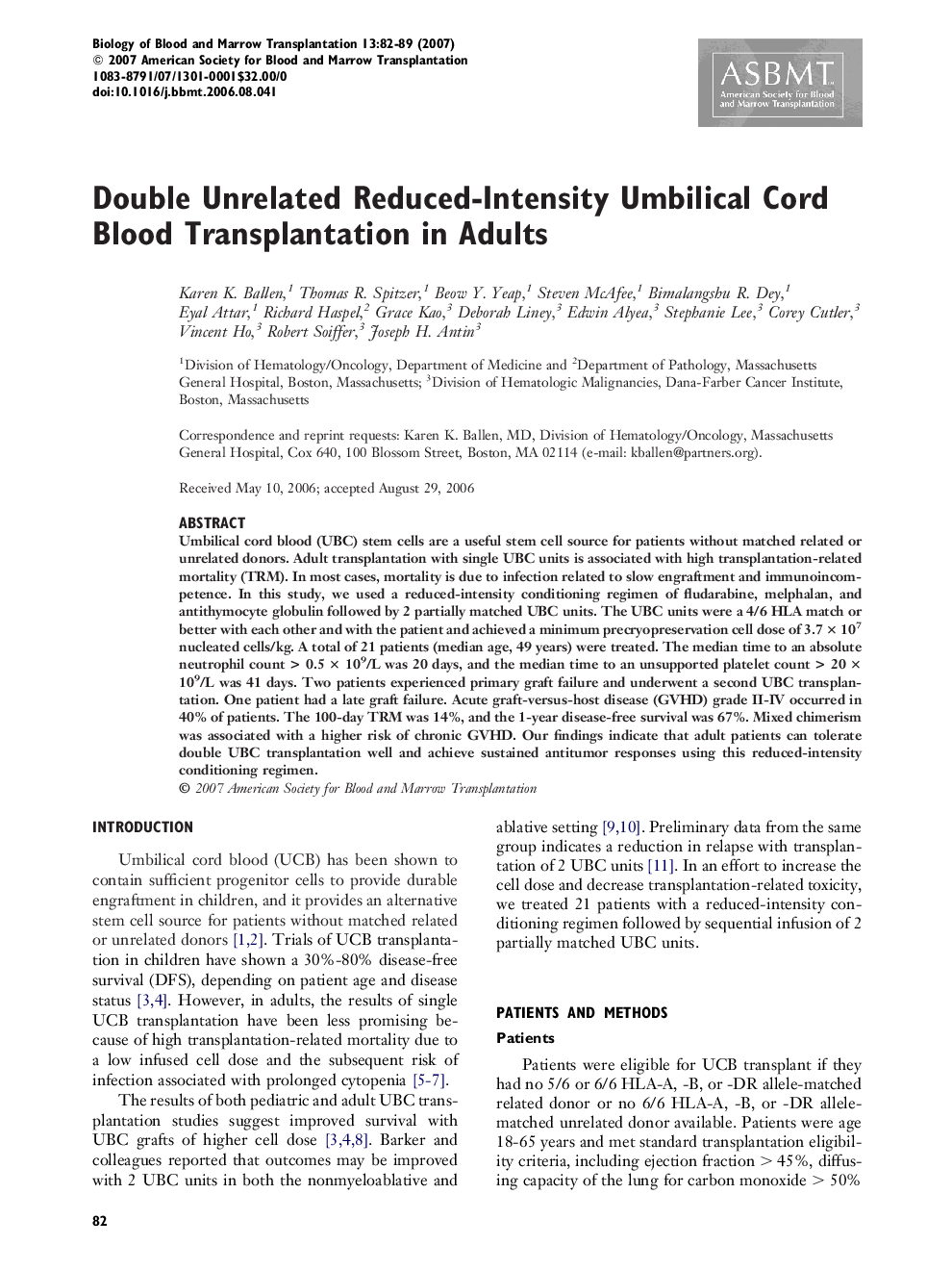| Article ID | Journal | Published Year | Pages | File Type |
|---|---|---|---|---|
| 2105926 | Biology of Blood and Marrow Transplantation | 2007 | 8 Pages |
Umbilical cord blood (UBC) stem cells are a useful stem cell source for patients without matched related or unrelated donors. Adult transplantation with single UBC units is associated with high transplantation-related mortality (TRM). In most cases, mortality is due to infection related to slow engraftment and immunoincompetence. In this study, we used a reduced-intensity conditioning regimen of fludarabine, melphalan, and antithymocyte globulin followed by 2 partially matched UBC units. The UBC units were a 4/6 HLA match or better with each other and with the patient and achieved a minimum precryopreservation cell dose of 3.7 × 107 nucleated cells/kg. A total of 21 patients (median age, 49 years) were treated. The median time to an absolute neutrophil count > 0.5 × 109/L was 20 days, and the median time to an unsupported platelet count > 20 × 109/L was 41 days. Two patients experienced primary graft failure and underwent a second UBC transplantation. One patient had a late graft failure. Acute graft-versus-host disease (GVHD) grade II-IV occurred in 40% of patients. The 100-day TRM was 14%, and the 1-year disease-free survival was 67%. Mixed chimerism was associated with a higher risk of chronic GVHD. Our findings indicate that adult patients can tolerate double UBC transplantation well and achieve sustained antitumor responses using this reduced-intensity conditioning regimen.
